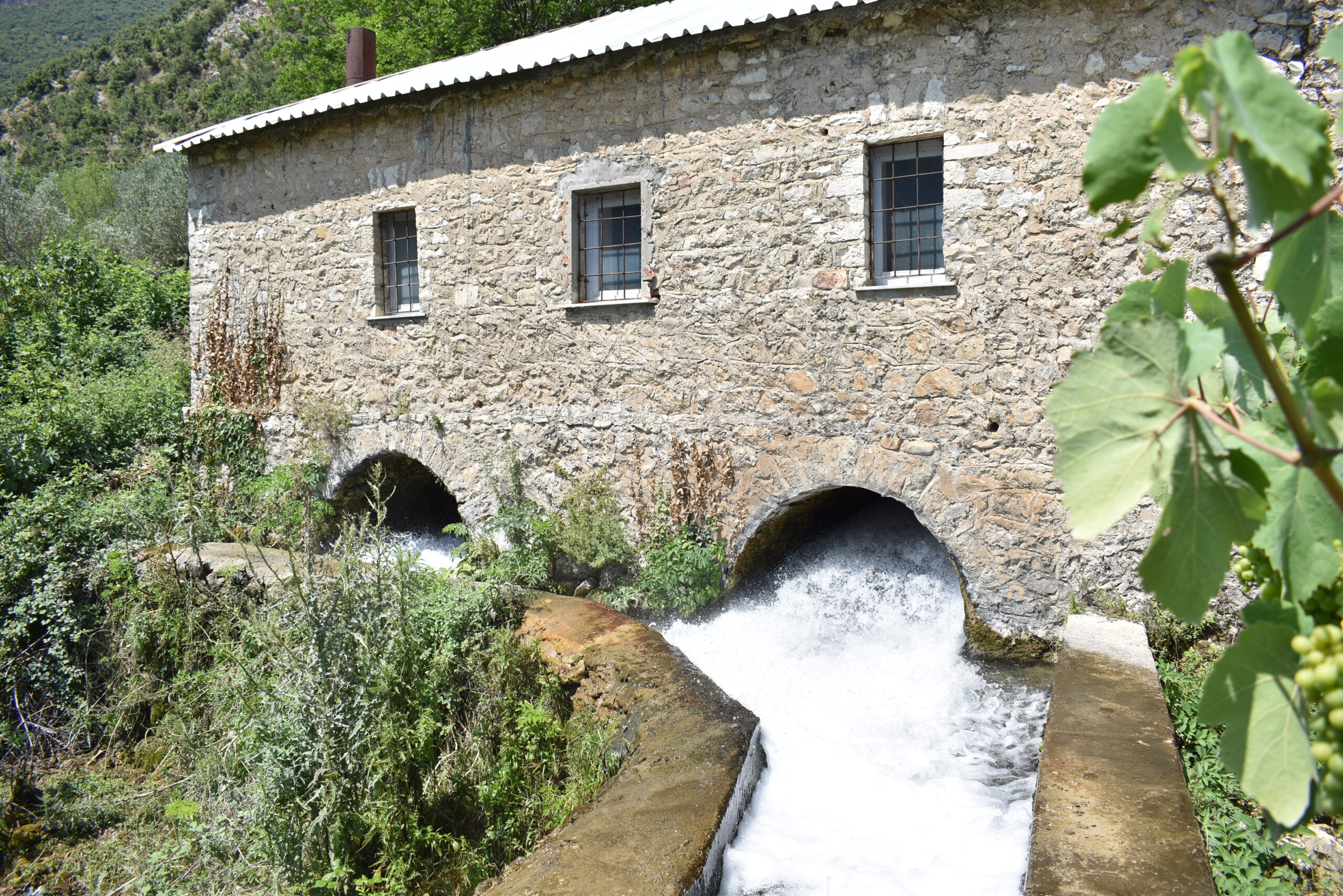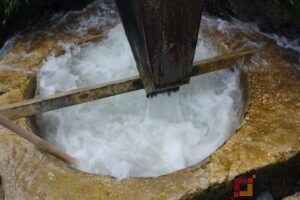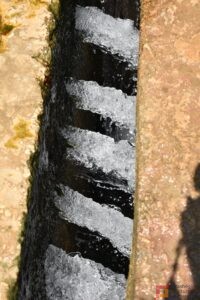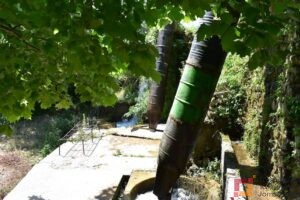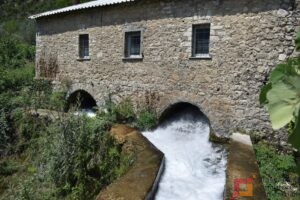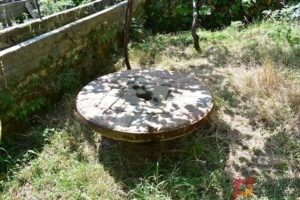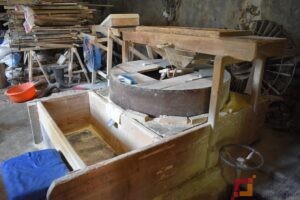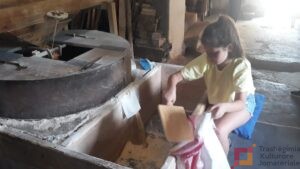The water-powered mill, in addition to grinding wheat or other grains, is also used for washing clothes.
The miller Ermal Bleta recounts how he inherited this profession from his father Lefter Bleta adding that his water mill was built as early as the 1780s by Ali Pash Tepelena.
The parts of this mill are:
The millstone (mokra) is brought into action using a metal shaft situated underneath. The water flows down from an almost 5 m height across the channel above the mill so that the huge amounts and pressure of the water activates the shaft, which during the rapid spinning and by rubbing the two millstones, grinds the grain.
Grain seeds fall one after another into the central hole of the constantly rotating mill. A simple wooden mechanism slipping over the rough surface of the mill controls the number of grains awaiting to be ground. The freshly ground flour comes out below the millstone into a grain bin where it is collected before feeding into the sack.
The mill’s starter is a heavy T-shaped iron device used to start and stop the mill.
Tentering gear controls the gap between the stones for grinding the wheat, whether finely or coarsely ground. It is used to adapt the space choosing between fine milling for people or coarse milling for livestock, etc.
The grain bin for exiting the ground grain. Once the wheat or corn is brought into the millstone, it is ground by rotating the two millstones, and the flour obtained from this process falls into the grain bin or granary as otherwise called, deliberately made to that effect.
The fulling mill (Dërstila): The turbine and the fulling mill are fixed to the lower floor of the mill.
The fulling mill is used for washing heavy clothes, such as blankets, fur rugs, carpets, bedspreads, drapery, etc.
The mill is fed with water from Bënçë river, which by means of an s-shaped gear flows down to the turbine of the mill. The water coming out of the turbine is used to activate other hammer-like mechanisms for pounding the felt with a club.
How to wash woolen clothes on the fulling mill.
The woolen cloak or the shepherd’s gun is sprinkled with plenty of washing powder and dropped into the washing tank, letting it sit for 45 minutes. The abundant water funnels through the s-shaped gear, into the turbine and the washing tank which due to high pressure coupled with the movement of certain pounding mechanisms (hammers) cleans up the woolen cloak floundering about in the rushing water. By the time this process is over, the clothes are lined up to dry under the sun.

